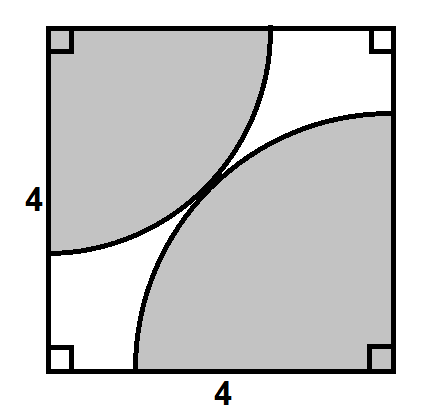Sectors in a Square
 Two touching sectors are drawn centred on opposite corners of a square of sidelength 4.
Two touching sectors are drawn centred on opposite corners of a square of sidelength 4.
If the total perimeter of the sectors can be expressed in the form where , and are integers and is a prime, find .
The answer is 12.
This section requires Javascript.
You are seeing this because something didn't load right. We suggest you, (a) try
refreshing the page, (b) enabling javascript if it is disabled on your browser and,
finally, (c)
loading the
non-javascript version of this page
. We're sorry about the hassle.
Let the radii be r 1 and r 2 . Then r 1 + r 2 = 4 2 .
Then evaluating the total perimeter, we have: 2 π ( r 1 + r 2 ) + 2 ( r 1 + r 2 ) = 4 2 ( 2 π + 2 ) = 2 ( 2 π + 8 ) which gives the answer 1 2 as required.